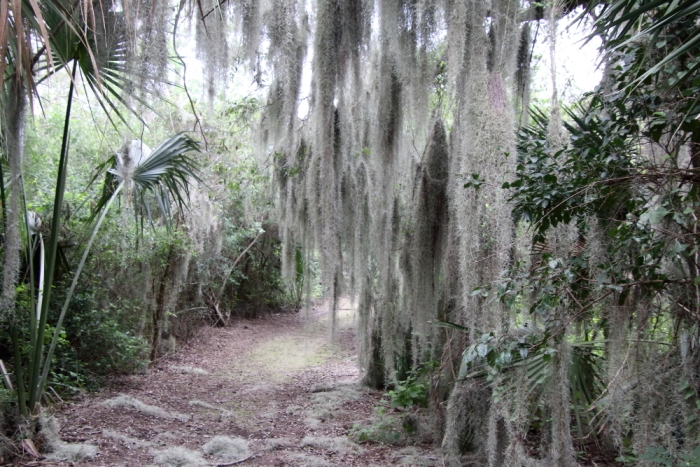Spanish Moss
(Tillandsia usneoides)
Spanish Moss (Tillandsia usneoides)
/
/

© psweet
CC BY-SA 4.0
Image By:
© psweet
Recorded By:
Copyright:
CC BY-SA 4.0
Copyright Notice:
Photo by: © psweet | License Type: CC BY-SA 4.0 | License URL: http://creativecommons.org/licenses/by-sa/4.0/ | Uploader: psweet | Publisher: iNaturalist |
















Estimated Native Range
Summary
Tillandsia usneoides, commonly known as Spanish moss, is an epiphytic perennial herb that drapes over tree branches in warm, humid environments. It is native to a range of habitats including subtropical forests, coastal plains, and wetlands in Mexico, Bermuda, the Bahamas, Central America, South America, and the Southern United States, and has been naturalized in Queensland, Australia. Spanish moss is particularly associated with southern live oak (Quercus virginiana) and bald cypress (Taxodium distichum) trees in the lowlands, swamps, and marshes of the mid-Atlantic and Southeastern U.S., from southeastern Virginia to Florida and west to Arkansas and Texas. This plant exhibits slender, pendulous stems with thin, curly, scaled leaves that can grow up to 20 feet long, forming distinctive hanging structures. The plant’s flowers are small and inconspicuous, blooming sporadically throughout the year.
Spanish moss is valued for its unique aesthetic and is often used in floral arrangements, as an ornamental feature in gardens, and in the creation of craft items. It requires little maintenance, thriving in humid conditions with high air circulation and prefers partial shade to full sun. It is not parasitic, as it absorbs nutrients and water from the air and rainfall. Spanish moss provides habitat for wildlife, including rat snakes and three species of bats, and is sensitive to air pollution, which has led to its decline in urban areas. It has historical uses as building insulation, mulch, packing material, mattress stuffing, and fiber. When cultivating Spanish moss, it is important to ensure it does not become too wet, as this can lead to rot.CC BY-SA 4.0
Spanish moss is valued for its unique aesthetic and is often used in floral arrangements, as an ornamental feature in gardens, and in the creation of craft items. It requires little maintenance, thriving in humid conditions with high air circulation and prefers partial shade to full sun. It is not parasitic, as it absorbs nutrients and water from the air and rainfall. Spanish moss provides habitat for wildlife, including rat snakes and three species of bats, and is sensitive to air pollution, which has led to its decline in urban areas. It has historical uses as building insulation, mulch, packing material, mattress stuffing, and fiber. When cultivating Spanish moss, it is important to ensure it does not become too wet, as this can lead to rot.CC BY-SA 4.0
Plant Description
- Plant Type: Vines
- Height: 2-4 feet
- Width: 1-3 feet
- Growth Rate: Slow
- Flower Color: Green
- Flowering Season: Spring, Summer, Fall
- Leaf Retention: Evergreen
Growth Requirements
- Sun: Full Sun, Part Shade, Full Shade
- Water: Medium
- Drainage: Fast, Medium
Common Uses
Low Maintenance, Potted Plant, Street Planting
Natural Habitat
Subtropical forests, coastal plains, and wetlands
Other Names
Common Names: Pele’s Hair , Old Man’s Beard
Scientific Names: Tillandsia usneoides , Dendropogon usneoides , Renealmia usneoides , Strepsia usneoides , Strepsia usneoides , Tillandsia crinita , Tillandsia crinita , Tillandsia filiformis , Tillandsia filiformis , Tillandsia trichodes
GBIF Accepted Name: